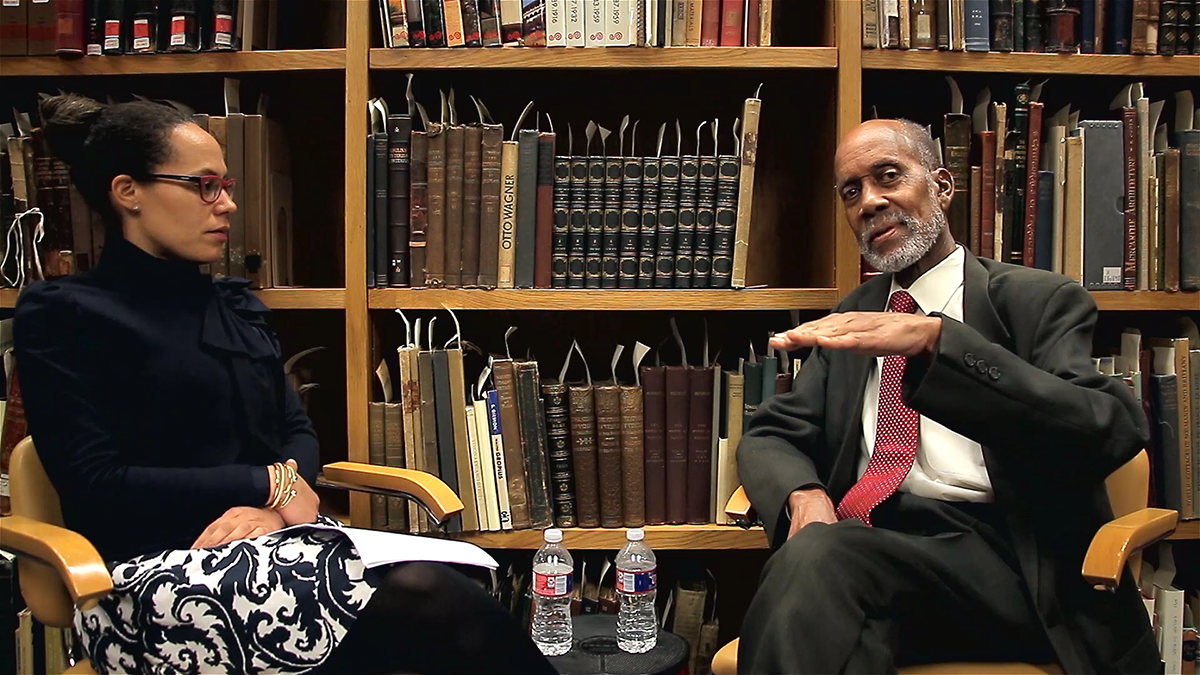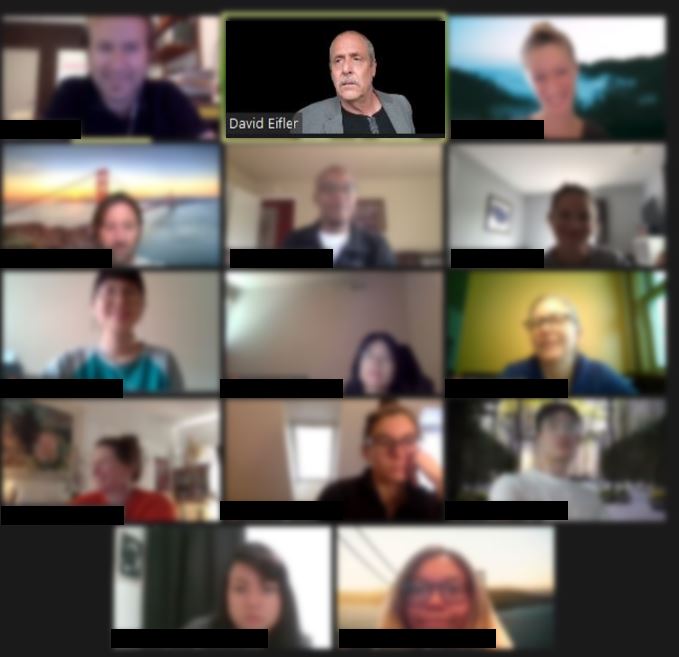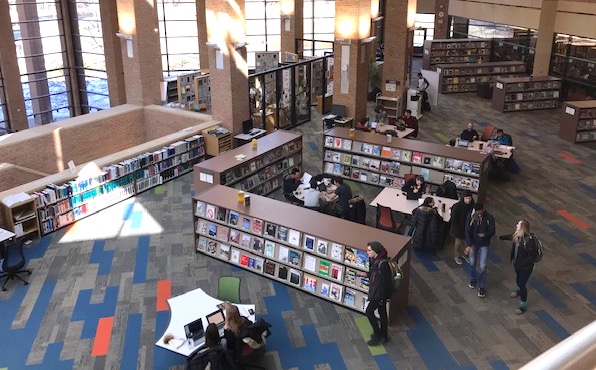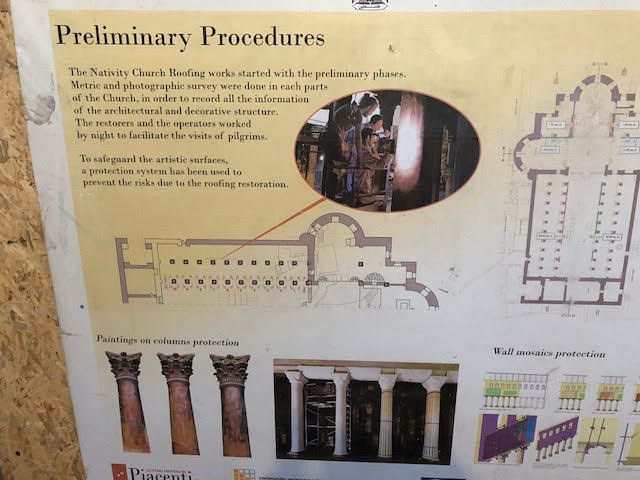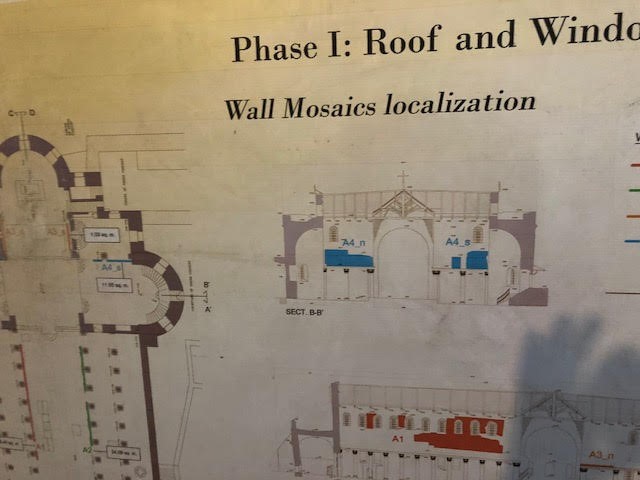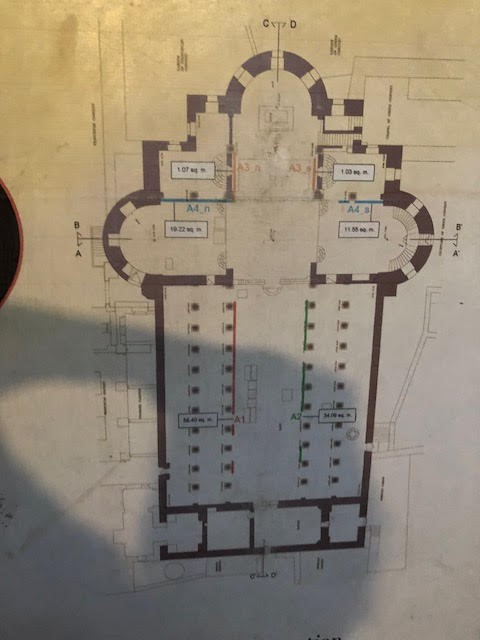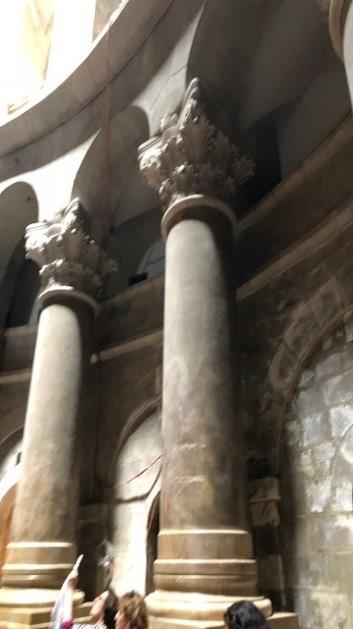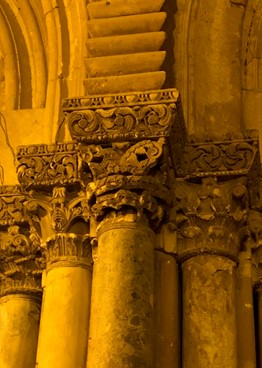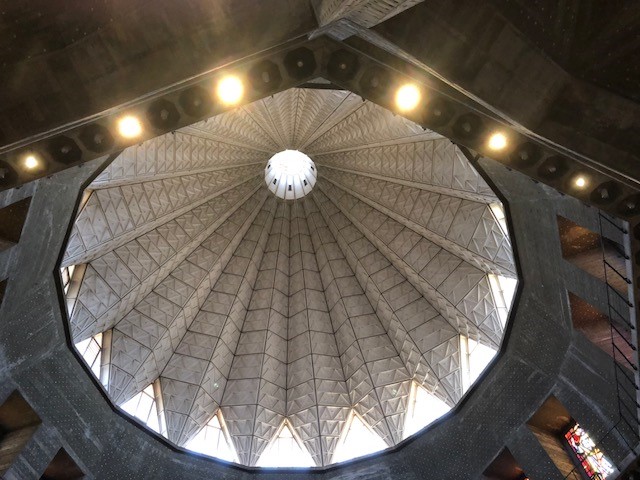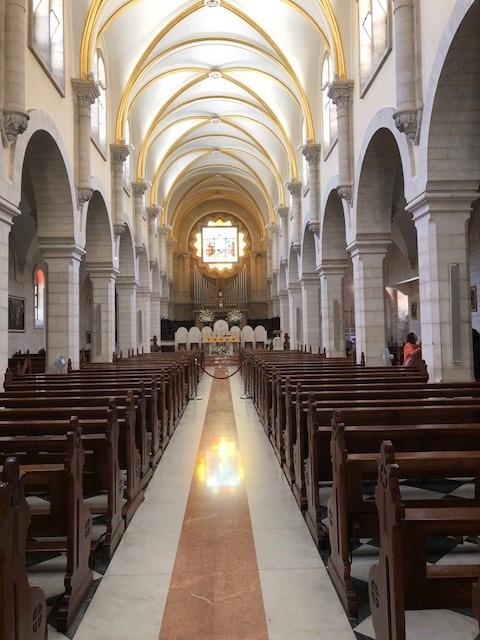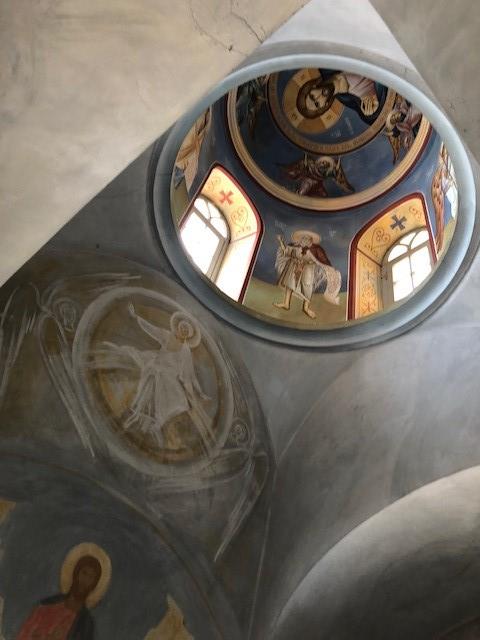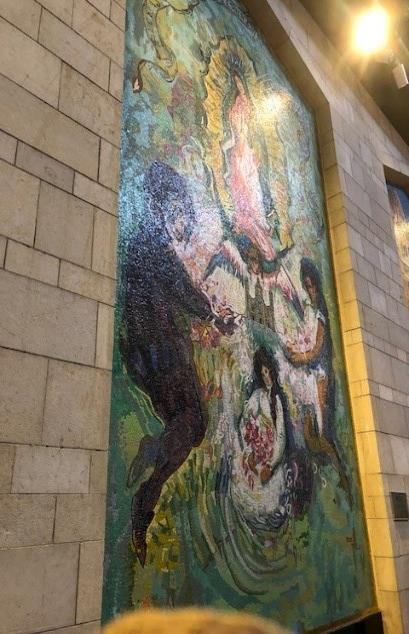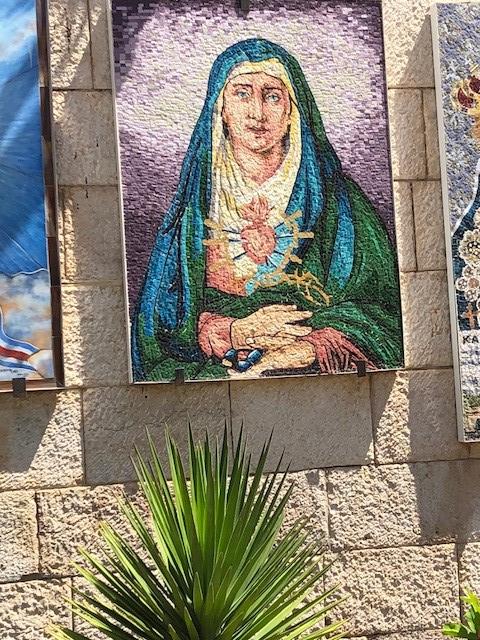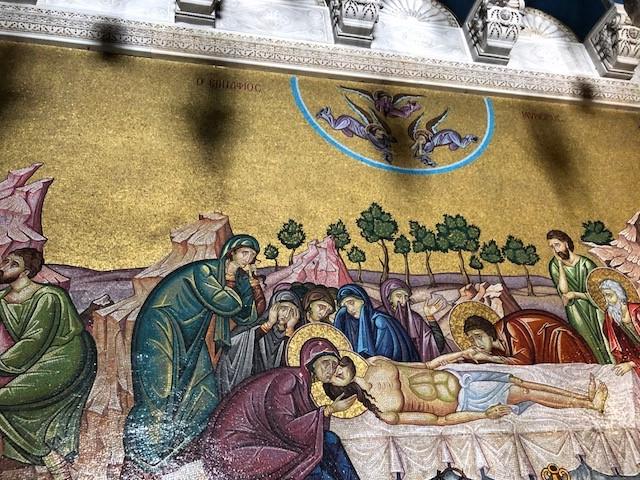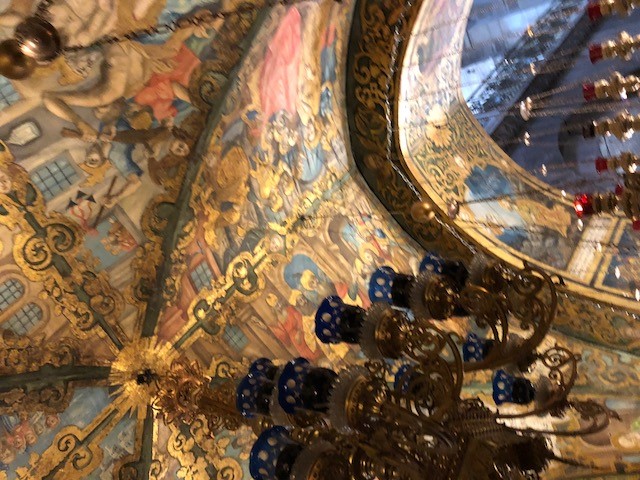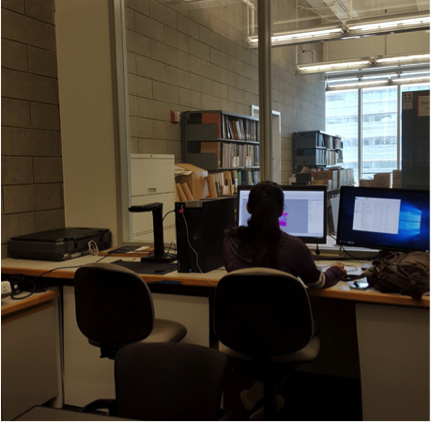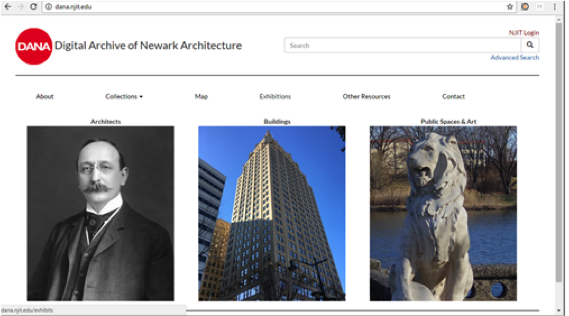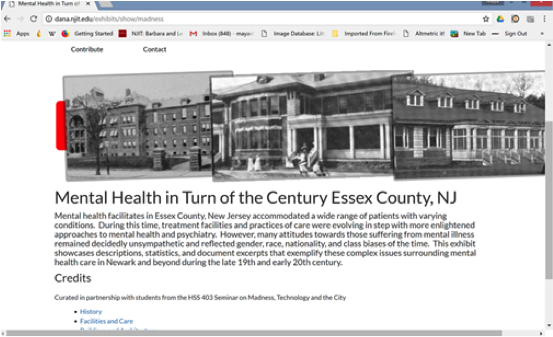Posts
They Stepped Up: Vendors During the Coronavirus
AASL Column, April 2020
Lucy Campbell and Barbara Opar, column editors
Column by Barbara Opar
It is a changed world out there. We in academia have had to adjust very quickly—faculty to preparing lectures with the resources on hand and then recording them online using newly prescribed software; librarians to dealing with reference queries that were once easy to answer in the print world but now with limited online content. And what about our students? They can no longer presume that they can consult older periodical issues or study structural systems on actual drawings. Many are unaware of what they cannot access. All of us have had to make quick adjustments to different resources and content.
But we have had support. Many vendors have stepped up and offered free content for the duration of the pandemic without the expectation of purchase. Examples are numerous and often surprising. By March 25, RedShelf and VitalSource opened access to hundreds of textbooks for free to faculty and staff at qualifying colleges and universities impacted by this crisis. Proquest is offering access to 150,000 titles. Sage Knowledge and Project Muse are on board as well as presses like Duke University and the University of Michigan. Brepolis and DeGruyter are among more commercial vendors expanding their access to nonsubscribers. Want to keep current with periodical literature? Then you can turn to Flipster or RBDigital. Streaming video content is being offered up by ArtFilms Digital, Kanopy, and Swank. The list goes on. Academic libraries with such access have often listed it right on their home pages. Your architecture librarians have taken this one step further and tailored this information for your own institution.
But there are two other important sources of content that I wish to bring to your attention. The first is Hathi Trust which was initially designed as a collaboration of the Big Ten Academic Alliance, the University of California system and the University of Virginia to establish a repository for archiving and sharing digital collections. Many other libraries have joined. As a repository, Hathi Trust contains both public domain as well as copyrighted material. By request, member libraries now have temporary digital access to over 50 percent of copyrighted print holdings. Libraries must meet standards such as no physical access to print collections and adhere to the Trust’s copyright guidelines. Check your libraries’ database menu. There are also ways to access some content as a guest at the organization’s site.
Everyone has also heard about the Internet Archive. But you may not know much about its latest initiative which some consider very controversial. The Internet Archive is a 501c 3 non-profit organization based in San Francisco and founded in 1996 by Brewster Kahle. To date, it has captured 20 petabytes of data. It partners with libraries to preserve and make accessible 20th-century resources in a broad array of topics and formats. The mission of its Open Library is “universal access to all knowledge”. In early March as the United States was beginning to understand the pandemic, the Internet Archive launched the National Emergency Library. Instead of controlling the number of copies of a title circulating at a time, the Library decided to remove limits. Traditionally, the number of copies available for circulation was based on the number of print copies in its own collection, and a waitlist was created for additional borrowers. That feature has been removed, allowing for unlimited access. The Internet Archive does not claim to include everything, but a quick search of the late Michael Sorkin’s writings shows some interesting content. One of two titles available here, but not commercially through any vendors, is the popular Variations on a Theme Park, making the Internet Archive another valuable source of online content. Initially well received and endorsed by a significant number of libraries including MIT, the Archive is now facing lawsuits and backlash from groups including the Authors Guild.
Life as we knew it has changed overnight. We are all proceeding as best as we can and making use of what is at hand and easily obtainable. What is certain is that each of these initiatives has helped in some way. Library suppliers have been offering deferred payments and cost reductions. The free albeit temporary content has made a tremendous difference in the past month and a half and will continue to do so as we all work to provide the services for which we are responsible.
Your Architecture Holiday Gift Guide
AASL Column, December 2019
Lucy Campbell and Barbara Opar, column editors
Column by Barbara Opar
Your Architecture Holiday Gift Guide
Another year has come and gone. The good news is that for many, this is a time for you to gift others or enjoy something bought for you. For the past two years, the December AASL column has presented a list of notable architecture books. Based on your feedback, we are doing it once more. Here are this year’s selections:
Bernheimer, Lily. Shaping of Us: How Everyday Spaces Structure Our Lives, Behavior, and Well-Being. San Antonio, TX: Trinity University Press, 2019 ISBN:9781595348722. 336 Pages. $26.95
In an engaging work, Lily Bernheimer explores the interactions people have with the spaces around them.
Bradbury, Dominic. Atlas of Mid-Century Modern Houses. London: Phaidon Press, 2019. ISBN: 978-0714876740. 440 pages. $96.99
Midcentury modern is again in fashion. Bradbury’s book is a well-researched tome on the topic, spanning iconic and lesser-known examples.
Bradbury, Dominic. Off the Grid: Houses for Escape. London: Thames and Hudson, 2019. ISBN: 9780500021422. 272 pages. $45.00
Bradbury explores extreme architecture, including remote cabins in the North and seaside retreats. More than an escapist title, the book shows how architects are responding to sustainability and creating new and liberating ways of life.
Follett, Ken. Notre-Dame: A Short History of the Meaning of Cathedrals. New York: Viking, 2019. ISBN: 9781984880253. 80 pages. $11.90
Novelist Ken Follett’s personal account of witnessing Notre Dame in flames, followed by a brief history of this masterpiece.
Gropius, Walter, ed. Walter Gropius: International Architecture. Zurich: Lars Müller Publishers, 2019. ISBN: 9783037785843. 106 pages. $45.00
One of a number of important translations appearing in the 100th year anniversary of the Bauhaus.
Hall, Jane. Breaking Ground: Architecture by Women. London: Phaidon Press, 2019. ISBN: 978-0714879277. 224 pages. $41.57
Halls presents the reader with a stunning visual survey of 200 of the best buildings designed by women architects.
Hendrickson, Paul. Plagued by Fire: The Dreams and Furies of Frank Lloyd Wright. New York: Knopf, 2019. ISBN: 9780385353656. 624 pages. $31.50
Frank Lloyd Wright comes alive in a new biography that depicts a Wright haunted by some of the choices he made.
Hu, Ming. Net Zero Energy Building: Predicted and Unintended Consequences. New York: Routledge, 2019. ISBN: 9780815367802. 161 pages. $39.95 (paperback)
The author studies energy efficiency, energy impact and environment concerns in a thoughtful title important to those in both practice and teaching.
Lazrus, Paula Kay. Building the Italian Renaissance: Brunelleschi’s Dome and the Florence Cathedral. New York: Reacting Consortium Press, 2019. ISBN: 9781469653396. 92 pages. $30.00
Do you teach about the Italian Renaissance? This title serves as an interesting way for students to learn about the final stage in the completion of Brunelleschi’s masterpiece.
Oppenheim. Lair: Radical Homes and Hideouts of Movie Villains. Miami: Tra Publishing, 2019. ISBN: 978-1732297869. 290 pages. $75.00
Want to check out something fun this holiday? Then this book is for you. It covers 15 unique houses from movies including Northwest by Northwest.
Roberts, Sam. A History of New York in 27 Buildings: The 400-Year Untold Story of an American Metropolis. London: Bloomsbury Publishing, 2019. ISBN: 9781620409800. 304 pages. $28.00
Sam Roberts of the New York Times discusses 27 of the most iconic New York City buildings.
Satow, Julie. The Plaza: The Secret Life of America’s Most Famous Hotel. New York: Twelve, 2019. ISBN: 9781455566679. 358 pages. $29.00
A behind-the-scenes look at an iconic building, this book shows how for many The Plaza serves as a concrete example of power and prestige.
Williams, Austin. New Chinese Architecture: Twenty Women Building the Future. London: Thames & Hudson, 2019. ISBN: 9780500343388. 256 pages. $45.00
Fifty key projects across China by both established and emerging women architects illustrate the changing landscape of Chinese architecture.
Zamora, Francesc. 150 Best Tiny Space Ideas. NYC, NY: Harper Design, 2019 ISBN13: 978-0062909220. 480 pages. $29.99
Innovative examples of dwellings under 450 square feet are unveiled in this well-illustrated work.
And lastly, for those feeling rich or who have a really supportive relative, you might want to consider these titles:
Bambach, Carmen C. Leonardo da Vinci Rediscovered. New Haven: Yale University Press, 2019. ISBN: 9780300191950. 2200 pages $382.28
On the 500th anniversary of the artist’s death, Carmen Bambach presents a new interpretation of the life, work, and legacy of Leonard da Vinci.
Chattopadhyay, Swati. The Routledge Companion to Critical Approaches to Contemporary Architecture. New York: Routledge, 2019. ISBN: 9781138917569. 488 pages. $194.70
Current architectural thought is discussed by thirty-six contributors who present a range of the different themes and views that impact architecture today.
Singha, Sumita, ed. Women in Architecture. New York: Routledge, 2019. ISBN: 9781138832930. 1,436 pages. $1390.00
Advertised as presenting a holistic, non-Eurocentric view of women in architecture, this is a major new reference work in the field of architecture.
Archaeology and Architecture in the Holy Land: Experience, Pilgrimage, and Documentation in Jerusalem and Israel
Lucy Campbell and Barbara Opar, column editors
Column by Michelle Amirkhanian, freelance writer
As a child in Bible school I used to dream about swimming in the Dead Sea. Fortunately, that dream came true for me this summer. In June of 2018, I travelled on a pilgrimage with my Armenian church to visit a number of biblical sites and document their architectural history and culture.
In Jerusalem routines revolve around three religions sharing space on a daily basis. Minaret music plays calling Muslims to daily prayers, while Jewish residents are in black robes, women wear headscarves, and kids go to Temple to pray and read the Torah. This is what makes this place holy. The world knows there is a lot of politics in the Holy Land. I can only say that with every positive purpose about Jerusalem the dynamics of contemporary politics make it a paradox. For instance, currently, Christians cannot visit Bethlehem, where Jesus was born, due to politics over who has rights to the territory.
Cities in Israel near Tel Aviv like Haifa and Jaffa port on the Mediterranean are metropolitan and modern architecture is prominent. There exists a sharp contrast between old and new, or biblical and contemporary.
Restoration and/or historic conservation is being completed on many churches and holy sites throughout Jerusalem and Armenia. Archaeology is also applied to rescue tile floors, paintings and mosaics discovered behind deteriorating walls. Documentation of the art and architecture is shared here.
The Nativity Church
The Restoration of the Nativity Church is taking place in Israel. The process and plans were posted alongside the archaeological work, where tile was found underneath the excavated ground floor.
The Nativity Church exemplifies how to protect painting on columns and wall mosaics, and how to approach preservation needs.
Although there is an ongoing restoration project at The Nativity Church, the doors are open to the public. However scaffolds and walls are torn down, and visitors must envision the final outcome of the restoration project while avoiding closed off areas and floors in poor condition.
Another example of sites being restored. New findings are being discovered under the buildings of these holy sites.
The Classical Orders
Buildings feature the three Greek Orders of Doric, Ionic, and Corinthian columns. Some have paintings that require restoration and cleaning. These pictures are some of the columns I documented during my trip.
Photos of Corinthian column found in Jerusalem’s many holy edifices are provided below.
Dome of the Rock
Dome of the Rock in Jerusalem was restored by Byzantine architect Antonio Barluzzi (1884-1960). Over 25 structures Barluzzi completed have since been restored and rebuilt in the Holy Land. The Custodia Terrea Sanctae Franciscan missionaries’ site lists his completed projects. These sites would not be in existence had it not been for Barluzzi’s talents in Byzantine Architecture and restoration.
Dome of the Rock in Jerusalem restoration
Church of St. Mary Magdalene
The Church of the Holy Sepulchre
The Holy Sepulchre was quite moving. There is a keyholder that is there to open the gate in the morning and close the gate. The key is like a key during Biblical times and so are the doors. The courtyard of the Holy Sepulchre displays the platform where Jesus stood and was sentenced to crucifixion by Pontius Pilate and inside is the “Golgotha” or where the empty tomb of Jesus is established. The Greek Orthodox, Catholics and Armenian orthodox have points and designated quarter within the Holy Sepulchre. Also, the Coptic, Ethiopian Orthodox, and Syriacs have much smaller quarters in the Church. Also, there is a Jewish site within the Holy Sepulchre. Finally, the awesome Edicule was restored last year and is in a sense the central piece of the Holy Sepulchre.
Fine Mastery of Byzantine Architecture
In the Holy Land pilgrims often notice opulence such as intricate mosaics, gold-plated paintings, Tiffany glass, and the creative awesome ceilings that are unapologetic of their existence. In visiting the Holy Land, I felt a strong connection to my religious beliefs which made the entire experience even more fulfilling.
A New Playing Field: Collaboration in Digital Scholarship
Lucy Campbell and Barbara Opar, column editors
Column by Maya Gervits, PhD, Director, Barbara & Leonard Littman Library, NJIT
In the rapidly changing information environment, the nature of the academic library and the role of librarians are both undergoing a fundamental shift away from merely curating scholarly materials toward the co-creation of these materials in active engagement and collaboration with researchers and other members of the academic community.This shift provides new opportunities for libraries to have increased visibility amongst scholars.
At the Littman Library at NJIT collaboration with the College of Architecture and Design (CoAD) faculty and students manifests itself in numerous ways. We strive to provide responsive services and to accommodate various learning opportunities. We act as guest lecturers for a variety of classes, conduct workshops, and compile citation analysis for the Promotion and Tenure Committee. Our “Music in the Library” program is incorporated into the college curriculum. The Library curates various exhibitions that present materials from its collection to support and encourage student and faculty creative work. The regular evening concert series provides a complementary mode to consider visual art and design works in historical cultural contexts. We provide guidance on copyright and host regular lunchtime Author Book Talks.
But we are always looking for additional ways to engage with our patrons. An important new role is Digital Scholarship. Contemporary research in many areas has expanded beyond what is considered traditional. Over the last decade, many academic libraries have established Digital Scholarship Labs or Centers. Equipped with advanced technological tools, these new facilities enable students and faculty to explore new methodologies, analyze complex data, and share the results of research in ways never before possible.
Nevertheless, despite all the advancements, digital scholarship in art and design disciplines has yet to define the parameters of this field. How can digital methods and tools benefit research? How can a small branch library facilitate collaboration? At NJIT all colleges are engaged in digital initiatives and related activities. The College of Architecture and Design is well known as a pioneer and innovator in the application of digital and information technology to augment and benefit the design process. These students have access to different labs where they can work on digital prototyping, fabrication, animation, robotics, augmented, and virtual reality.
Over the years, the Littman Library – the only branch library on campus, located in the heart of the College of Architecture and Design main facility- has been involved in activities which have ranged from the digitization of its collections to more complex undertakings. Because of the growing interest by faculty and students and the increased number of projects they were producing, the Littman Library decided to dedicate a special space to digital scholarship. We repurposed the slide room and equipped it with two computers, flat-bed, slide, and book scanners, printer, and an Oculus Rift virtual reality set. We secured server space and downloaded software for data visualization, online publishing, textual and spatial analysis. We recently had the good fortune to receive a significant external endowment to further develop the Lab. But the initial phase has been completed with modest funding and limited staff time.
Recognizing the need to educate not only students but also ourselves we introduced the ”Skills Exchange” program which is a series of workshops focused on mastering various software. We compiled research guides “Software at the College of Architecture and Design” and “Resources in Digital Scholarship” and added a subscription to the commercially distributed library of online tutorials Pluralsight to allow for self-paced learning with high quality educational support materials.
Virtual Reality technology revolutionizes both how architecture is being designed and how it can be perceived. Using the Lab, students and faculty simulate realistic experiences of the built environment, explore their designs in Virtual Reality, reconstruct historical monuments, and work on projects that employ digital tools and methods.
Our Image Database supports technical building systems, history, and studio classes. Digitized maps formed the core of the Digital Archive of Newark Architecture (http://dana.njit.edu)- a project conceived to document the built environment of Newark that has grown into a gateway of information related to the physical life of Newark, its architecture, infrastructure, public art, and city planning.
______ Recent implementation of ArcGIS allows for data to be analyzed and visualized in a different way. An additional crowdsourcing function enables the public to submit materials over the web, and a mobile application with location awareness provides for a more engaging user experience. Other projects designed in collaboration with CoAD faculty and students are focused on the application of Virtual Reality to digital architectural history, and employ various publishing platforms, tools for visualization, and space analysis. The photogrammetry technique is being implemented to create a searchable version of the virtual collection of electrical measuring Instruments (housed in Van Houten Library). And the recent “History of the College of Architecture and Design” initiative aims to preserve the College’s past by digitizing old photographs, video and audio recordings, documents, and born digital materials.
To increase collaboration at NJIT, both faculty and staff from various university divisions have formed a special interest group concerned with digital scholarship. NJIT also joined the New Jersey Digital Humanities Consortium – a group of enthusiasts and professionals from various New Jersey institutions. This helps us coordinate our activities and share pertinent information. The members of this group strongly believe that we can utilize our intellectual and creative potentials more effectively by working collaboratively across disciplines; that the library not only supports various digital initiatives pursued and promoted by the CoAD faculty and administration, but can also act as an active partner.
Thinking Tools for Architecture and Design Libraries

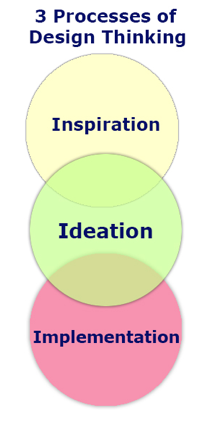 These same processes of design thinking can be utilized in the strategy and management of academic libraries to provide solutions to some of the challenges we face. Some common challenges include: how to engage with patrons in new ways, how to get students involved in the design of the library space, patron-centered collection development, and doing more with limited budgets. In this column, we will highlight design thinking tools that can be applied to help solve these challenges.
These same processes of design thinking can be utilized in the strategy and management of academic libraries to provide solutions to some of the challenges we face. Some common challenges include: how to engage with patrons in new ways, how to get students involved in the design of the library space, patron-centered collection development, and doing more with limited budgets. In this column, we will highlight design thinking tools that can be applied to help solve these challenges.#rarebookfriday: Systematizing an Approach to Social Media to Reach a Targeted Audience
Lucy Campbell and Barbara Opar, column editors
Column by Viveca Pattison Robichaud, Special Collections Librarian, Architecture Library, University of Notre Dame
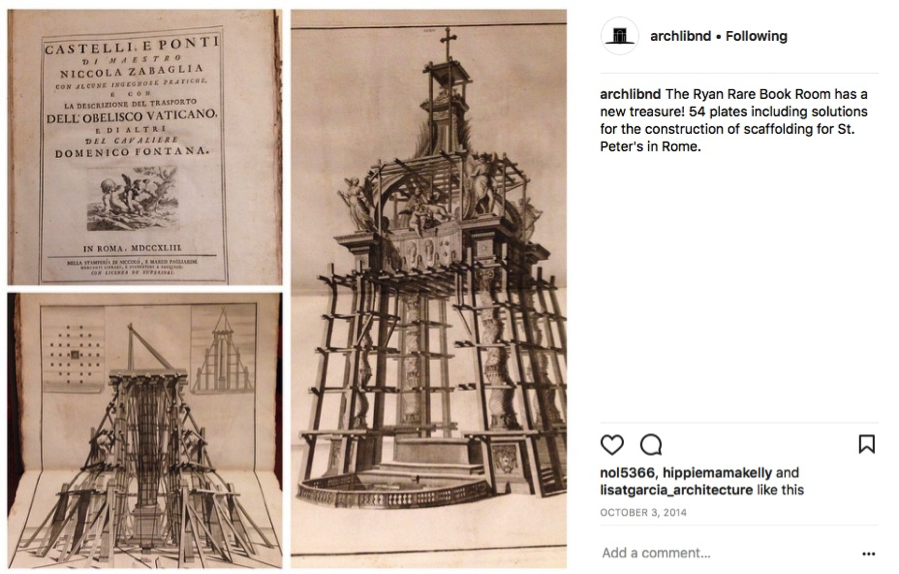
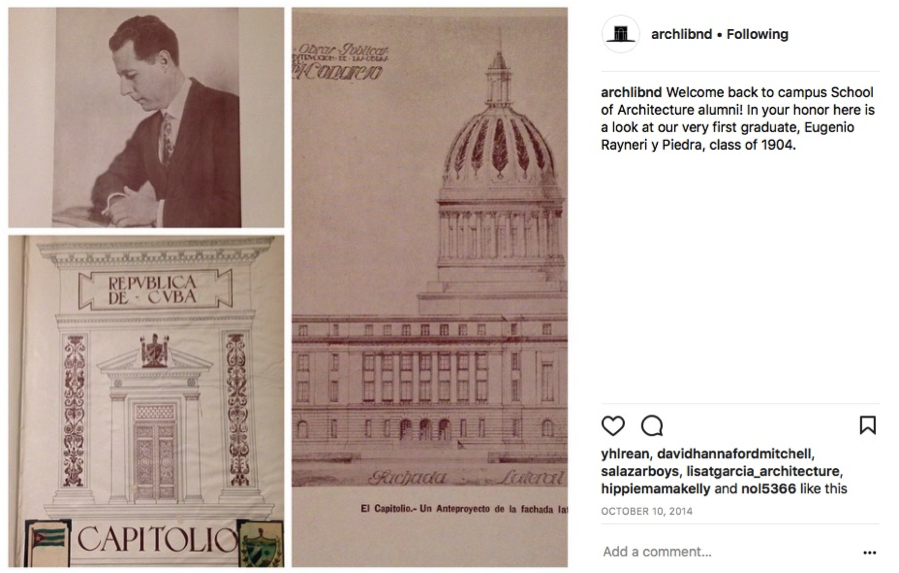

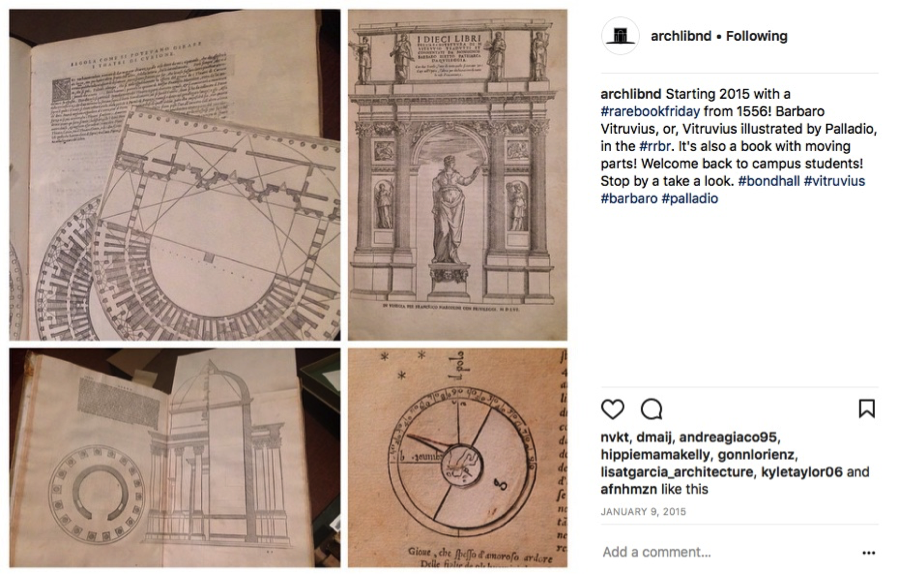
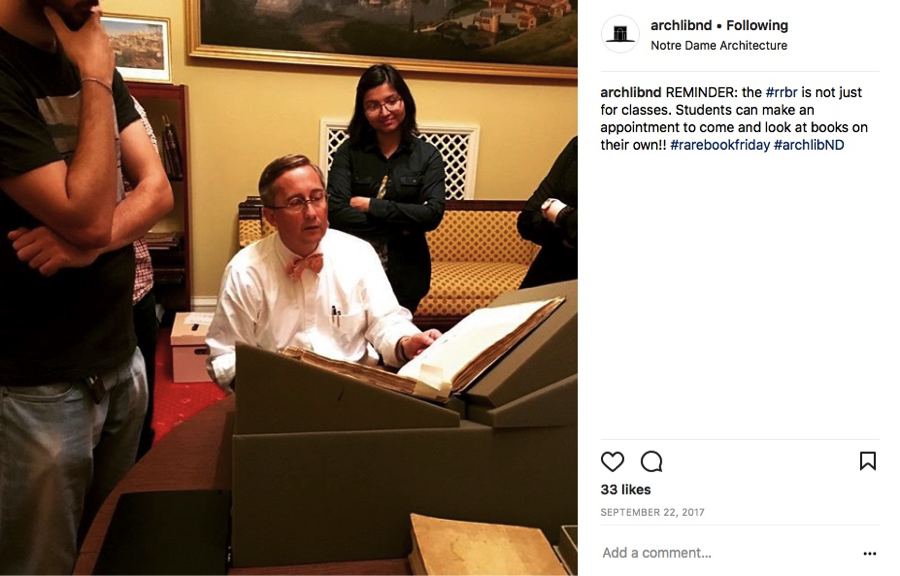

 Study Architecture
Study Architecture  ProPEL
ProPEL 